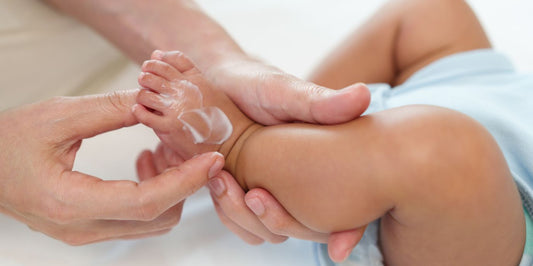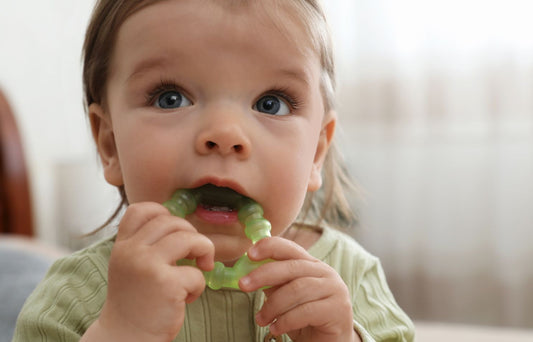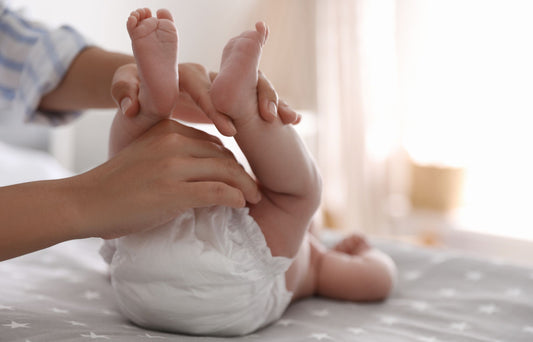The tiny feet of babies hold a surprising secret—they are home to a map of pressure points that correspond to various organs and systems in their bodies. By gently stimulating these points, parents can help alleviate common baby discomforts, promote relaxation, and support overall health. This ancient practice, rooted in reflexology, is a simple yet powerful tool for nurturing your baby’s well-being.
Understanding Reflexology for Babies
Reflexology is a therapeutic technique that involves applying gentle pressure to specific points on the feet, hands, or ears. Each point corresponds to different parts of the body, and stimulating these points is believed to promote healing and balance. For babies, reflexology is adapted to be extremely gentle, making it a safe and soothing practice.
Key Pressure Points on Baby’s Feet
Here’s a guide to some of the most important pressure points on a baby’s feet and the potential benefits they offer:
1. Toes
Head and Teeth: The tips of the toes are linked to the head and teeth. Gently massaging these points can help soothe teething pain and alleviate headaches.
Sinuses: The base of the toes corresponds to the sinuses. This area can be massaged to help relieve congestion and sinus discomfort.
2. Ball of the Foot
Lungs and Chest: The ball of the foot is connected to the lungs and chest area. Applying gentle pressure here can aid in respiratory issues, helping to clear mucus and ease breathing difficulties.
3. Arch of the Foot
Upper Abdomen: The upper arch of the foot is linked to the upper abdomen, including the stomach and liver. Massaging this area can help with digestion and reduce symptoms of colic and acid reflux.
Solar Plexus: The center of the arch corresponds to the solar plexus, a key area for stress and tension relief. Gentle pressure here can promote relaxation and calm.
4. Heel
Lower Abdomen: The heel is associated with the lower abdomen, including the intestines and bladder. Massaging this area can help relieve constipation, gas, and urinary discomfort.
Pelvis: The outer edge of the heel is connected to the pelvic area. This point can be helpful for overall relaxation and balancing the body's systems.
5. Outer Edge of the Foot
Spine: The outer edge of the foot, running from the heel to the toe, is linked to the spine. Gentle stroking along this line can help with overall alignment and nervous system health.
How to Practice Reflexology on Your Baby
Here are some steps to safely and effectively practice reflexology on your baby:
-
Create a Calm Environment: Find a quiet, comfortable space where both you and your baby can relax. Soft lighting and soothing music can enhance the calming effect.
-
Warm Your Hands: Ensure your hands are warm before starting. Cold hands can be uncomfortable for your baby.
-
Use Gentle Pressure: Always use a light touch. Babies have sensitive skin and delicate systems, so gentle pressure is all that is needed.
-
Observe Your Baby’s Reactions: Pay close attention to how your baby responds. If they seem uncomfortable or fussy, stop and try a different pressure point or technique later.
-
Focus on Key Areas: Start with the toes and gradually move to other parts of the foot. Spend a few seconds on each point, using gentle circular motions or light stroking.
-
Be Consistent: Regular sessions, even if just for a few minutes each day, can provide the most benefits. Consistency helps your baby become accustomed to the practice and maximizes its effects.
Benefits of Foot Reflexology for Babies
- Eases Discomfort: Helps alleviate common issues such as colic, gas, constipation, teething pain, and congestion.
- Promotes Relaxation: Calms the nervous system, reducing stress and helping babies to sleep better.
- Supports Bonding: Provides a nurturing touch that strengthens the emotional connection between parent and baby.
- Boosts Immune System: Regular stimulation of pressure points can support the immune system, helping to keep your baby healthy.
When to Seek Professional Guidance
While parents can learn and apply basic reflexology techniques at home, consulting with a certified reflexologist can be beneficial, especially if your baby has specific health concerns. A professional can provide personalized techniques and ensure that the practice is both safe and effective.
Exploring the gentle art of reflexology on your baby’s feet can unlock natural comfort and wellness. By understanding and utilizing these key pressure points, parents can provide relief from common discomforts, promote relaxation, and support their baby’s overall health in a nurturing and holistic way. Whether used as a part of daily routine or as a special bonding activity, reflexology offers a loving touch that nurtures both body and soul.






